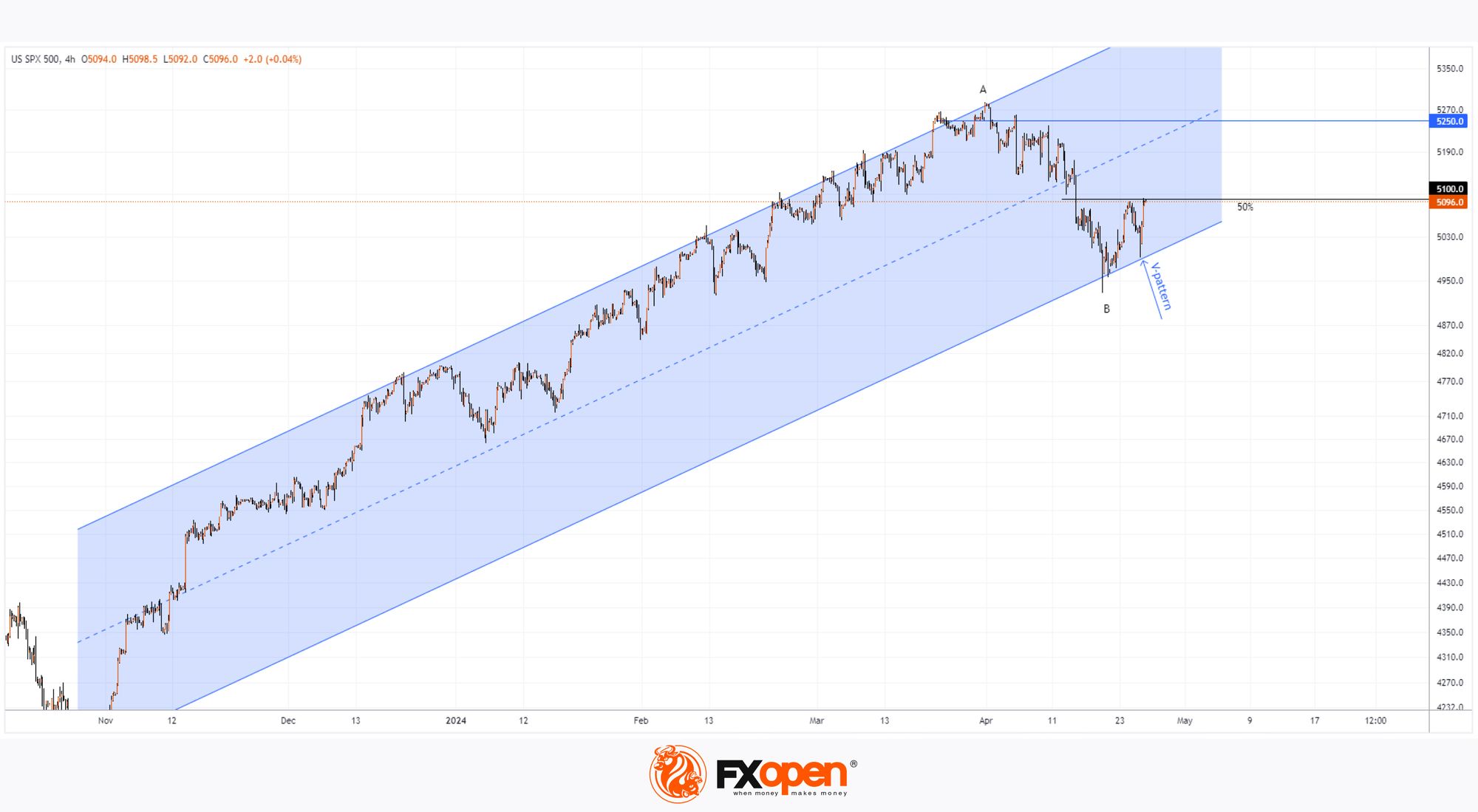FXOpen

Data released yesterday showed US GDP growth slowed to 1.6% in the first quarter of the year. According to ForexFactory: forecast = 2.2%, past value = 2.4%.
Reaction to the news sent the S&P 500 mini stock index (US SPX 500 mini on FXOpen) sharply lower as market participants may fear a period of stagflation — a period when economic growth slows and inflation remains stubbornly high.
Speaking at the Economic Club of New York on Tuesday, JPMorgan Chase CEO Jamie Dimon warned investors: “Stagflation has the negative effect of lack of growth and inflation. It hurts profits, consumers and jobs. And yes, I think there is a chance it could happen again,” he said.
However, this morning the 4-hour chart of the US SPX 500 mini shows that the stock market is recovering thanks to gains in Google and Microsoft, which reported strongly after the close of the main trading session.

According to the technical analysis of the US SPX 500 mini:
→ the price forms a V-shaped rebound pattern from the lower border of the ascending channel (shown in blue)
→ this rebound can also be considered as a test of the April 19-22 range and the market’s “unpreparedness” to fall below the psychological mark of 5,000 points.
That is, the situation looks like a correction to the lower border of the channel as part of the 2024 rally, after which the logical development of the scenario would be an attempt by the bulls to resume the upward trend and try to attack the level of 5,250 again. How successful will the attempt be?
From a technical point of view, valuable information about the seriousness of the bulls' intentions can be provided by the ability of the US SPX 500 price to return to the upper half of the channel and consolidate above the resistance at 5100, which approximately corresponds to the 50% distance from the bearish A→B impulse.
From a fundamental analysis point of view, of course, we need signs that the US economy will avoid stagflation. According to an analysis by Ben Carlson of Ritholtz Wealth Management, between 1966 and 1981, a period spanning much of the stagflation era, investors in the US stock market lost more than 35% of their capital, CNN writes.
Trade global index CFDs with zero commission and tight spreads. Open your FXOpen account now or learn more about trading index CFDs with FXOpen.
This article represents the opinion of the Companies operating under the FXOpen brand only. It is not to be construed as an offer, solicitation, or recommendation with respect to products and services provided by the Companies operating under the FXOpen brand, nor is it to be considered financial advice.
Stay ahead of the market!
Subscribe now to our mailing list and receive the latest market news and insights delivered directly to your inbox.








